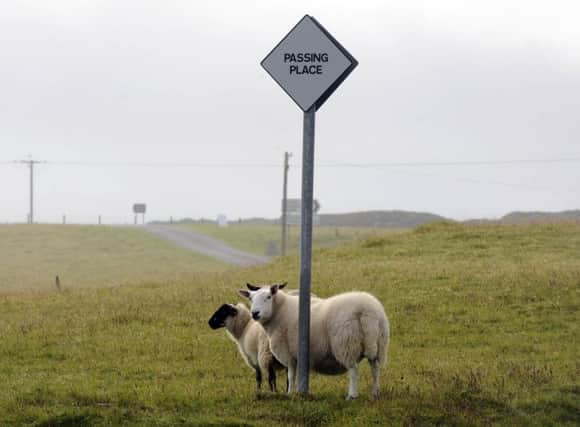Forget slipper farmers, tackle soft-shoe shuffle


With the Scottish Government’s proposals for using a further 5 per cent on top of the already agreed 8 per cent of its ceiling on coupled support being given the green light from Brussels some weeks ago – and now awaiting only the go-ahead from UK ministers – the nitty-gritty of how the measures might operate on the ground were discussed at the meeting.
Douglas Bell, senior agricultural policy consultant with the SRUC’s farm business services, revealed the surprising statistic that, with both arable and upland farmers facing cuts in support averaging close to 20 per cent, the majority of specialist hill sheep producers were actually winners under the reforms.
Advertisement
Hide AdAdvertisement
Hide AdHowever, he added that, although one of the aims of the reforms had been to do away with slipper farmers, without some careful targeting of support in the hills, there was a real danger of encouraging a new breed of “soft-shoe farmers” who would indulge in only the minimum of activity to gain support levels far higher than they had received in the past.
And although the use of only one area payment rate for the highly variable rough grazing region was at the root of the problem, both the NSA and NFUS had recently accepted that the use of coupled support as a targeting tool could help get round the problem of splitting the region.
But, with a breathtaking plethora of ways in which the support could be targeted, getting it right would be crucial for the industry. It was also highlighted that the Scottish Government was unlikely to accept an overly complex system as this would not only be costly to administer and police but was also likely to attract the attention of EU auditors, with the possible threat of penalties.
Also addressing the meeting, Jeremy Moody, secretary and adviser to the Central Association of Agricultural Valuers, warned producers that the industry should give careful thought to where it wanted to find itself when the next round of reforms came in and should try to include an element of “future-proofing”.
He said that, although coupled payments might help support the industry in the meantime, such an approach went against what the EU was trying to do with the reforms in the long term – and were unlikely to survive the next round of negotiations.
He said that coupled support to maintain production could actually be looked upon as covert payments to purchasers and processors to keep the prices down:
“And on the other side of the equation, farmers have a woeful record for holding on to their support payments – as they generally leak out in the form of higher land, rent, machinery and feed costs.”
£58m on its way to banks accounts
Thousands of hill farmers and crofters in Scotland’s most fragile and remote areas are set to receive vital support payments by the end of this week the Scottish Government announced yesterday.
Advertisement
Hide AdAdvertisement
Hide AdRural affairs secretary Richard Lochhead has confirmed payments from the less favoured area support scheme (LFASS) 2013 will start to arrive in bank accounts from today, stating that payment of 10,400 claims, worth some £58 million, had been authorised, equating to around 92 per cent of potentially eligible claimants for the scheme, which is worth £65.5m in total.
The news was welcomed by NFU Scotland’s director of policy Jonnie Hall, who said: “The delivery of this support is a welcome boost to cash flows for farmers and crofters, as we emerge from winter. This year’s payment run will see a larger number of LFASS claimants receive their funds in the first week compared to this time last year.
“LFASS is a hugely important source of funding for those farmers who are at the heart Scotland’s crucial livestock sector. With common agricultural policy (CAP) reform discussions working towards a conclusion and a new rural development plan for Scotland in the throes of being created, we need to ensure that the many benefits that LFASS delivers in terms of activity, livestock production and the environment are at the core of any new scheme.”
He added that the earlier agreement to roll the scheme over for two years would give some stability during the transition to the new CAP.